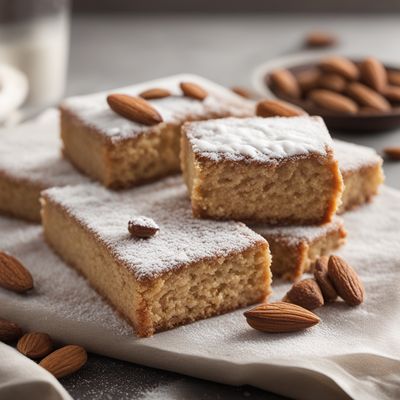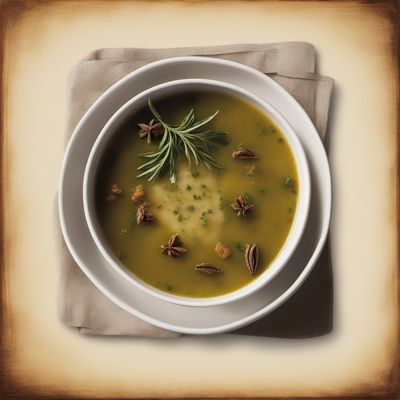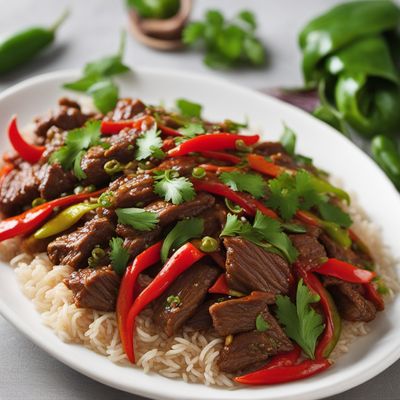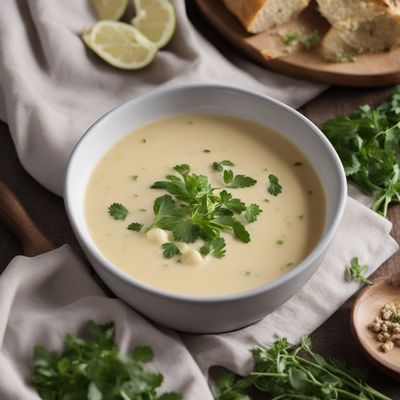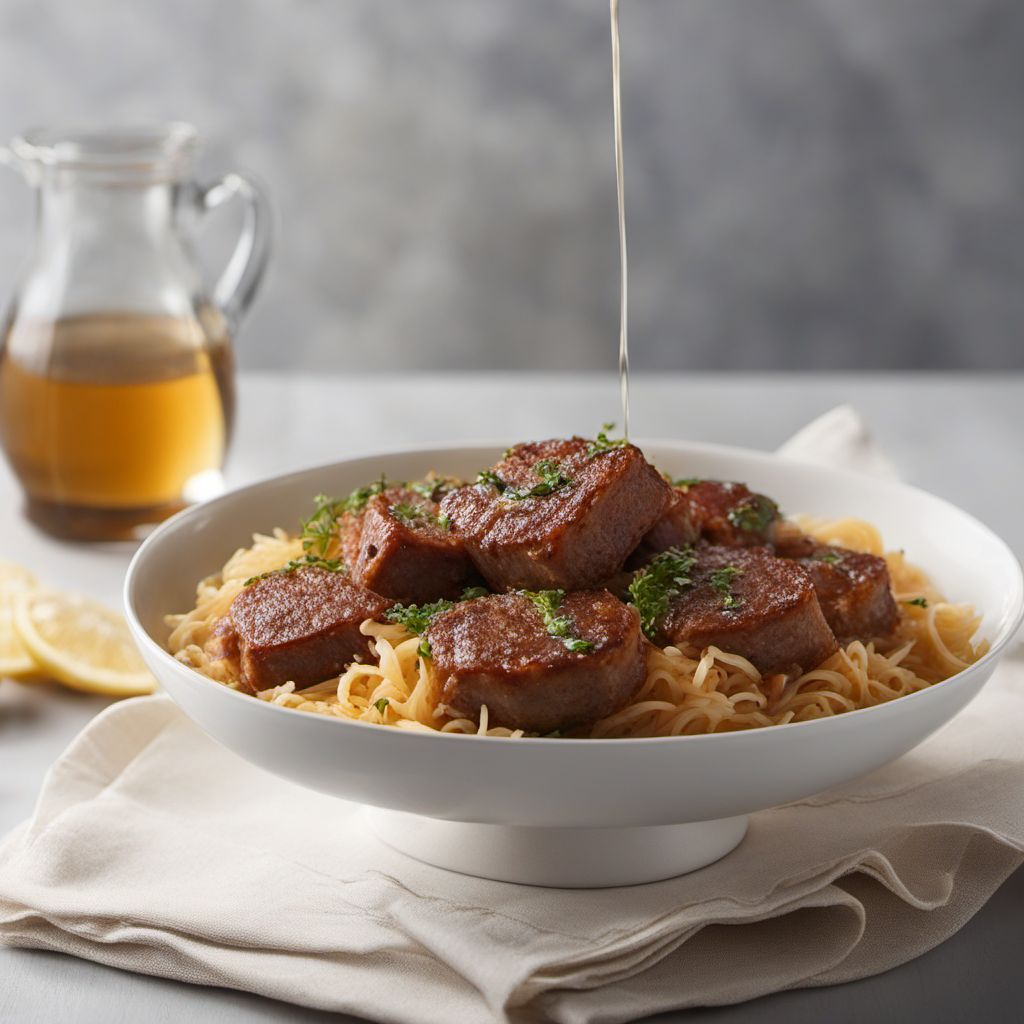
Recipe
Palatine Bollo
Savory Delight: Palatine Bollo with a Twist
4.1 out of 5
Palatine Bollo is a delectable dish from the Palatine cuisine that combines the flavors of Spanish and Palatine culinary traditions. This recipe offers a unique twist to the original Spanish Bollo, incorporating local ingredients and spices to create a delightful fusion of flavors.
Metadata
Preparation time
30 minutes
Cooking time
35 minutes
Total time
65 minutes
Yields
4 servings
Preparation difficulty
Medium
Suitable for
Omnivore, Low-carb (if using a low-carb pastry alternative), High-protein, Dairy-free (if using dairy-free butter substitute), Nut-free
Allergens
Wheat (gluten), Dairy (if using butter)
Not suitable for
Vegetarian, Vegan, Gluten-free (unless using a gluten-free pastry alternative), Paleo, Keto
Ingredients
The Palatine Bollo differs from the original Spanish Bollo by incorporating Palatine sausage, sauerkraut, and mustard into the filling. These ingredients add a unique flavor profile that reflects the culinary traditions of the Palatine region. Additionally, the Palatine Bollo uses a flaky pastry crust, which provides a lighter texture compared to the traditional Spanish Bollo. We alse have the original recipe for Bollo, so you can check it out.
-
2 cups (250g) all-purpose flour 2 cups (250g) all-purpose flour
-
1/2 teaspoon salt 1/2 teaspoon salt
-
1/2 cup (113g) unsalted butter, cold and cubed 1/2 cup (113g) unsalted butter, cold and cubed
-
1/4 cup (60ml) ice water 1/4 cup (60ml) ice water
-
1/2 pound (225g) Palatine sausage, diced 1/2 pound (225g) Palatine sausage, diced
-
1 cup (150g) sauerkraut, drained and squeezed 1 cup (150g) sauerkraut, drained and squeezed
-
1 small onion, finely chopped 1 small onion, finely chopped
-
2 cloves garlic, minced 2 cloves garlic, minced
-
1 teaspoon mustard 1 teaspoon mustard
-
1/2 teaspoon caraway seeds 1/2 teaspoon caraway seeds
-
Salt and pepper to taste Salt and pepper to taste
-
1 egg, beaten (for egg wash) 1 egg, beaten (for egg wash)
Nutrition
- Calories: 420 kcal / 1760 KJ
- Fat: 28g (Saturated Fat: 13g)
- Carbohydrates: 30g (Sugar: 2g)
- Protein: 12g
- Fiber: 2g
- Salt: 1.5g
Preparation
-
1.In a large mixing bowl, combine the flour and salt. Add the cold, cubed butter and use a pastry cutter or your fingers to cut the butter into the flour until the mixture resembles coarse crumbs.
-
2.Gradually add the ice water, a tablespoon at a time, and mix until the dough comes together. Shape the dough into a disk, wrap it in plastic wrap, and refrigerate for at least 30 minutes.
-
3.In a skillet, cook the Palatine sausage over medium heat until browned. Remove the sausage from the skillet and set aside.
-
4.In the same skillet, sauté the onion and garlic until softened. Add the sauerkraut, mustard, caraway seeds, cooked sausage, salt, and pepper. Cook for an additional 5 minutes, stirring occasionally. Remove from heat and let the filling cool.
-
5.Preheat the oven to 180°C (350°F).
-
6.On a lightly floured surface, roll out the chilled dough into a circle about 1/8 inch thick. Transfer the dough to a greased pie dish or baking sheet.
-
7.Spoon the cooled filling onto the center of the dough, leaving a border around the edges. Fold the edges of the dough over the filling, pleating as necessary.
-
8.Brush the beaten egg over the exposed edges of the dough.
-
9.Bake in the preheated oven for 30-35 minutes, or until the crust is golden brown.
-
10.Remove from the oven and let it cool for a few minutes before serving.
Treat your ingredients with care...
- Palatine sausage — Ensure the sausage is fully cooked before adding it to the filling. You can substitute it with any other flavorful sausage if Palatine sausage is not available.
- Sauerkraut — Make sure to drain and squeeze the sauerkraut well to remove excess moisture. This will prevent the filling from becoming too watery.
- Caraway seeds — If you prefer a milder flavor, you can reduce the amount of caraway seeds or omit them altogether.
Tips & Tricks
- For a vegetarian version, you can substitute the Palatine sausage with diced mushrooms or tofu for a similar texture and umami flavor.
- Serve the Palatine Bollo warm with a dollop of mustard on the side for an extra kick of flavor.
- If you prefer a crispier crust, brush the bottom of the pastry with mustard before adding the filling.
- Leftover Palatine Bollo can be refrigerated and reheated in the oven for a quick and delicious meal.
- Experiment with different spices and herbs in the filling to customize the flavor to your liking.
Serving advice
Palatine Bollo is best served warm as a main dish. Accompany it with a fresh green salad or steamed vegetables to complete the meal.
Presentation advice
To enhance the presentation, garnish the Palatine Bollo with a sprinkle of fresh herbs such as parsley or chives. The golden-brown crust and the colorful filling will make it an eye-catching centerpiece on the dining table.
More recipes...
For Bollo
For Spanish cuisine » Browse all
More Spanish cuisine dishes » Browse all

Pestiños
Pestiños are a traditional Spanish dessert made from fried dough and honey.

Plato Alpujarreño
Alpujarreño Plate
Plato Alpujarreño is a traditional Spanish dish that originates from the Alpujarras region of Andalusia. It is a hearty and flavorful dish that is...

Empanada Gallega
Galician Empanada
Empanada Gallega is a traditional Spanish pie that is filled with a mixture of tuna, peppers, onions, and tomatoes. It is a savory and hearty dish...



